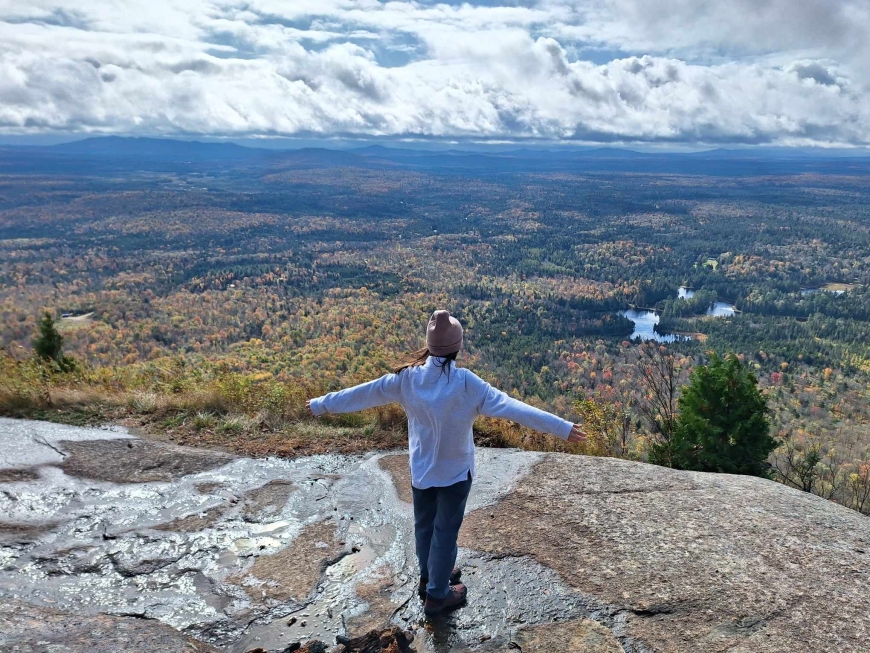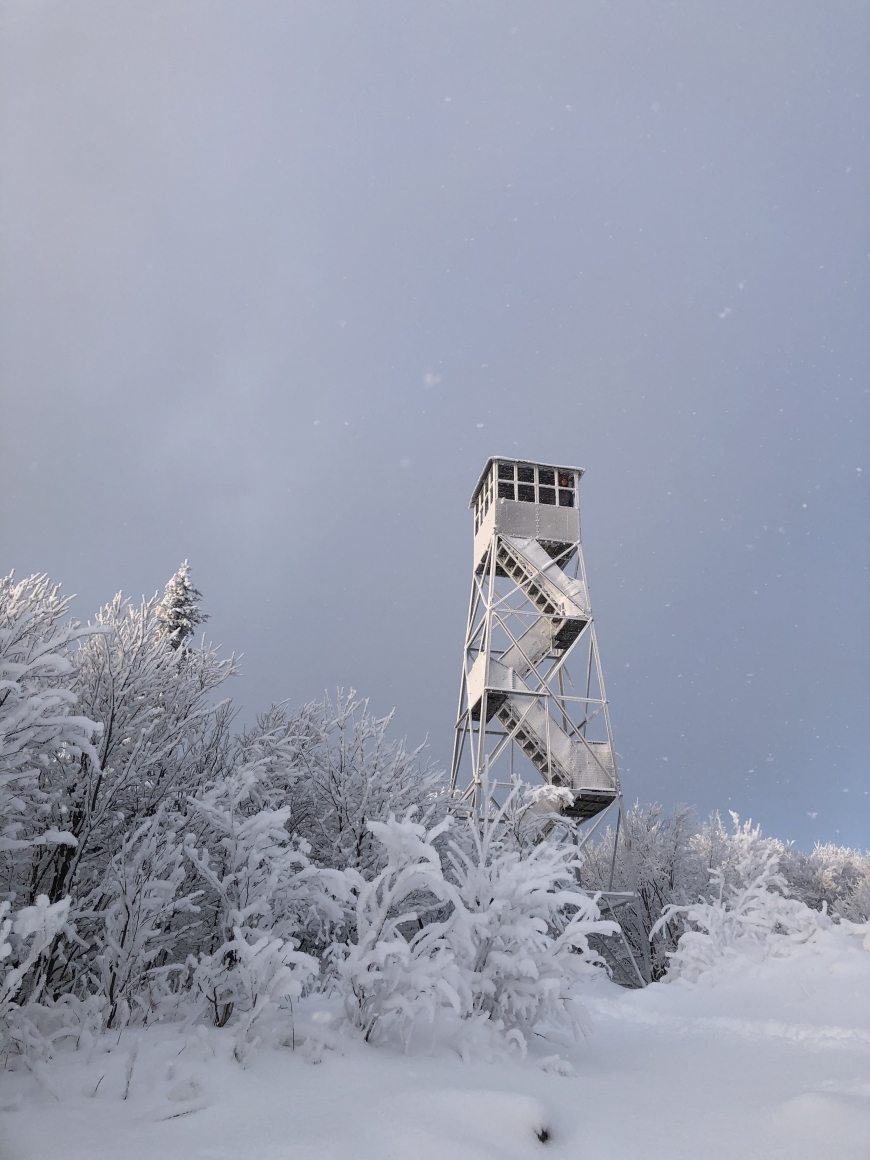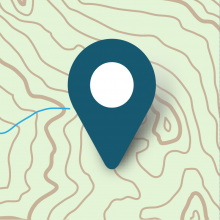



A Brief History of Azure
In the Northern edge of the Adirondack park, where the towering heights of the High Peaks give way to smaller mountains and rolling hills, sits one such feature. 2,518 feet tall and one mile to the top, it presents an easy hike that anyone can do. And indeed, Azure Mountain is many people's first hike given its proximity to universities in Canton and Potsdam. Typically, in the first few weeks back on campus, students are looking to take advantage of both the warm weather and beauty of the North Country, so naturally, Azure often winds up on the to-do list.
Students who do venture up her steep but short slope will find an incredible vista looking into the park, as well as one of Azure Mountain’s defining characteristics, its fire tower. I had the privilege of enjoying a September sunset from the top and might I say, it made me realize how underrated September sunsets are, so go watch a September sunset and thank me later. But while sunsets and pretty views are welcomed by Mt. Azure hikes, few know about the history of the mountain, and how it serves as a microcosm of the Adirondack Park as a whole.
To understand the history of Azure Mountain, we first have to start with its name, Azure. The mountain was not always known as Azure, but rather Blue Mountain, named so by the first settlers of the region for the summit always giving off a blue hue. However, when famous Adirondack surveyor Verplanck Colvin surveyed the northern part of the park in 1883, he made reference to a ‘blue peak’ that he was using to conduct his survey. He would call the peak “Blue Mt.”, before crossing out the name, and writing “Azure Mt.”. However, the name existed only in Colvin's work, and locals still referred to the mountain as Blue Mountain.
Eventually, when the state set about building fire towers in the Park in 1914, they realized they already had a Blue Mountain with a fire tower and set about fixing the confusion. They decided to change the official name of Blue Mountain to Azure Mountain, drawing on Colvin's earlier toponym (the name origin of a peak). To reflect this change, maps and surveys would have to be changed, as well as the road leading to the base of the mountain, Blue Mountain Road. Seeing the demand as an unnecessary imposition by some bureaucrat in Albany, the locals refused, and the road to Azure Mt. remains Blue Mountain Road.
The road itself led to the Blue Mountain House. Funnily enough, Blue Mountain of Blue Mountain Lake also had a Blue Mountain House at its base. The house is still standing, and is now part of the Adirondack Experience Museum, unlike the Blue Mountain House of Azure, which exists now only as a faint outline of a foundation in the woods. Opened around 1866 by Canadian settler and possible Civil War veteran Chauncey Merrill, the house acted as a sportsman's lodge hosting travelers and wealthy hunters. The house would burn down twice in 1869 and 1871 but was rebuilt each time by Merrill. In 1880 the property would be sold to Henry Phelps, a Vermonter, who in turn would sell to Darwin Day, a local from Nicholeville in 1895. In 1925, the fourth owner Eugene Elliot, of Washington D.C. would buy the property with hopes of converting the hotel into the biggest in the Park and a lavish summer residence. However, the Great Depression would cause the house to fall on hard times, and a fire in 1932 would seal its fate.
The story of Azure Mountain exemplifies the story of the Adirondacks and its people. Situated in a remote area drowning in miles of wilderness, the mountain attracted hardy woodsmen from Canada and New England to scratch out a life on untapped land. Using the area's natural beauty and abundant wildlife to cater to wealthy travelers looking to escape their urban dwellings. Where big ambitions of huge hotels and massive profits burn to ash, and from the new soil, a fresh forest grows. One to be enjoyed by all. So, whether it's your first time or you're going back, think about Mt. Azure’s story, and hopefully you will take my advice and will enjoy a beautiful and peaceful September sunset.

